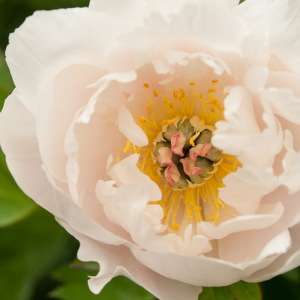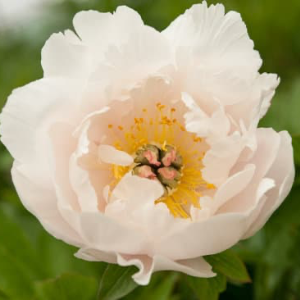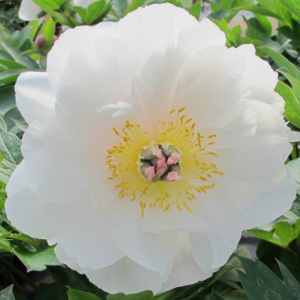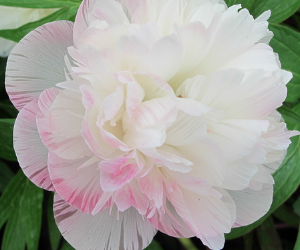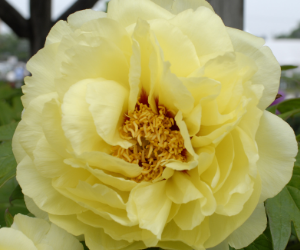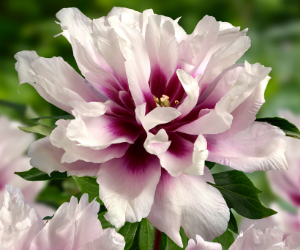‘Love Affair’.
What a grand bloom.
Its name takes me back to the time when I first fell bud over stem in love with peonies.
I remember the moment this love affair began quite vividly.
My grandfather taught me a lot about horticulture and gardening, showing me how to sow seeds, grow vegetables and, with chrysanthemums, how to pinch them out and curl the petals to get the perfect bloom. Today I use what I learnt from him with my peonies.
Of course, the biggest thing he left me with is his love and passion for gardening.
My after-school job was watering the hanging baskets at the local garden centre and I absolutely loved it. I got to spend time in the nursery with the plants and with people who loved plants.
So when it came to choosing A-levels, I really wanted to study horticulture and botany but my career advisers and teachers said I needed to do something a bit more "sensible" in terms of any future career so I ended up studying law.
But fundamentally it wasn't what I wanted to do. I was always looking for ways to grow plants and be outside.
After switching careers, buying this nursery and starting to experiment with growing various perennials, I recall one day spotting peonies from afar and thinking “What is that flower?!”
It ruled the nursery, towering above everything else.
It’s a love affair that has not faded and I suspect it never will.
‘Love Affair’ is a sumptuous, fragrant, semi-double Itoh Hybrid. When mature the flowers may become nearly double. This variety is particularly sought-after as there aren’t many whites among Intersectionals, making it very unusual and rare. Its snow white petals can, at times, have a hint of pale pink of the carpels in the centre, highlighted by golden stamens.
You’ll see blooms on this vigorously growing beauty mid-season to late mid-season and can enjoy the dark green foliage on its compact, medium bush (about 70cm) throughout the growing season.
Developed and registered by Hollingsworth in 2005 (parentage Lactiflora ‘Gertrude Allen’ x Lutea Hybrid ‘Alice Harding’) this Intersectional Hybrid appeared around 1990 as a branch sport of the American Peony Societies yellow flowered ‘Prairie Sunshine’. ‘Love Affair’ and ‘Prairie Sunshine’ seem just about identical in all respects apart from the petal colour, however the symmetry of ‘Love Affair’ with its wonderfully broad, rounded guard petals and copious rows of inner petals makes it a superior Intersectional Hybrid.
Intersectional Hybrids are also known as Itoh peonies as they were named after a Japanese breeder, Mr Toichi Itoh, who created the first hybrid in the 1940’s, crossing Paeonia x lemoinei (a hybrid tree) with Paeonia lactiflora Kakoden (a white flowered herbaceous).
There were many others involved along the way in making this “impossible dream” of creating the perfect flower come true, but we’ll talk about this more in a future post.
So what have we learnt?
Well, if lawyers can become horticulturists and impossible flowers can come about, any dream will do and can come true!
Wouldn’t you agree?

